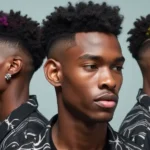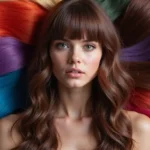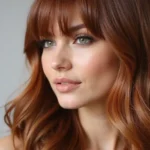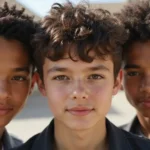Dirty blonde hair strikes the perfect balance between light and dark tones creating one of the most versatile and sought-after hair colors today. This sophisticated shade combines golden blonde highlights with deeper ashy undertones resulting in a naturally sun-kissed appearance that complements virtually every skin tone.
We’ve seen countless celebrities embrace this effortlessly chic look from Jennifer Aniston to Blake Lively proving that dirty blonde isn’t just a trend—it’s a timeless classic. The beauty of this color lies in its low-maintenance nature and ability to grow out gracefully without harsh regrowth lines.
Whether you’re considering your first blonde transformation or looking to refresh your current color dirty blonde offers the perfect compromise. It delivers that coveted blonde aesthetic while maintaining depth and dimension that flatters everyone from cool to warm undertones.
What Is Dirty Blonde Hair and Why Is It So Popular?
Dirty blonde hair combines warm golden tones with cooler ashy undertones to create a sophisticated multi-dimensional color. This trendy shade mimics the natural sun-kissed effect that happens when blonde hair develops darker roots and subtle lowlights over time.
The color typically features a base of medium to light brown with strategically placed blonde highlights and babylights throughout. Colorists achieve this look by weaving together shades like honey blonde, ash blonde, and light brown to create depth and movement.
Celebrity influence has significantly boosted dirty blonde’s popularity in recent years. Stars like Jennifer Aniston, Blake Lively, and Margot Robbie have showcased various interpretations of this versatile shade on red carpets and in films.
Maintenance requirements make dirty blonde particularly appealing for busy lifestyles. The color grows out gracefully because the darker roots blend seamlessly with the overall tone, requiring touch-ups every 8-12 weeks instead of the typical 4-6 weeks needed for traditional blonde.
Skin tone compatibility is another major factor in its widespread appeal. The balanced warm and cool tones work beautifully with various complexions, from fair to medium skin tones with different undertones.
Seasonal versatility allows dirty blonde to transition effortlessly from summer’s golden highlights to autumn’s richer tones. The color adapts naturally to changing light conditions and can be adjusted with simple toning treatments to match seasonal preferences.
Professional styling benefits include enhanced texture appearance and easier heat styling. The varied tones create natural-looking volume and dimension that photographs beautifully and requires minimal daily maintenance.
Choosing the Perfect Dirty Blonde Shade for Your Skin Tone
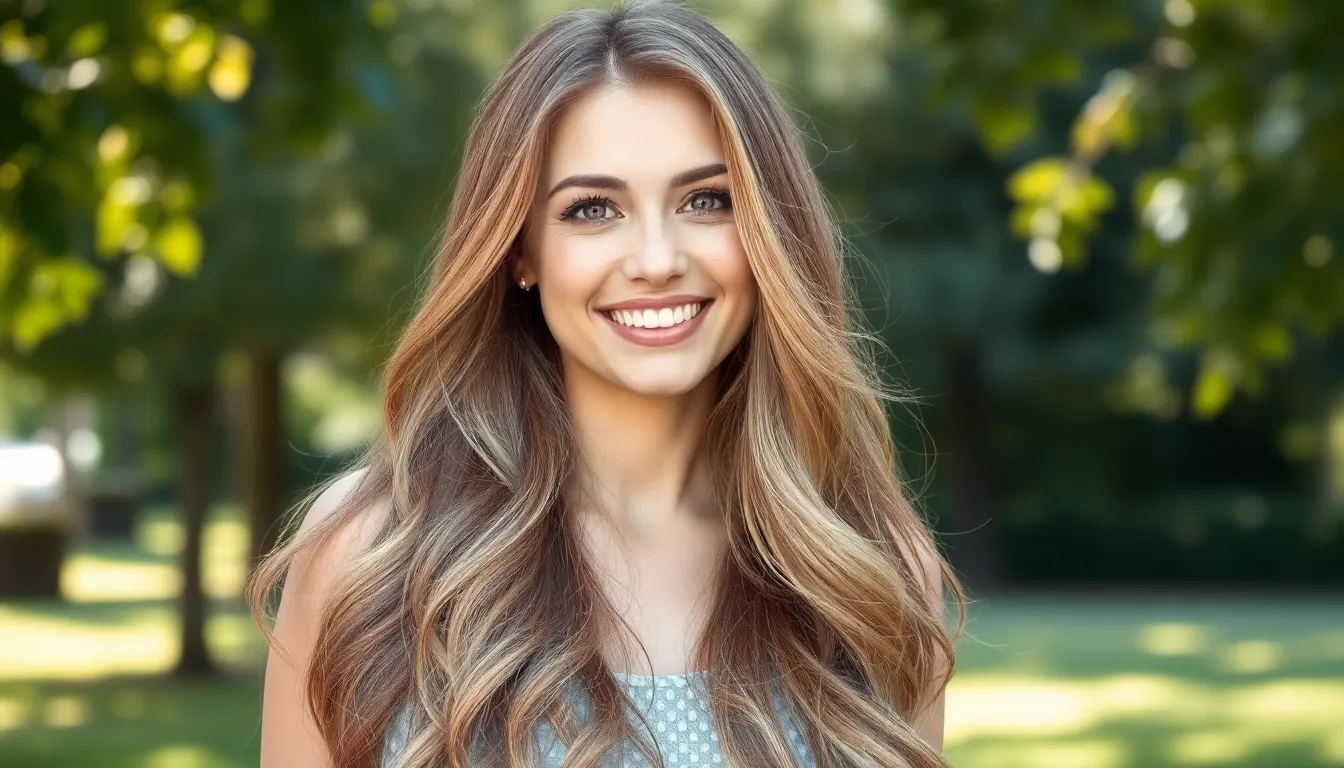
Finding your ideal dirty blonde shade depends on identifying your skin’s undertones and selecting complementary color variations. We’ll help you navigate the different options to achieve a harmonious and flattering look that enhances your natural complexion.
Cool-Toned Dirty Blonde Options
Ash dirty blonde works beautifully for cool undertones, featuring silvery and platinum highlights mixed with medium brown bases. Pink or blue undertones in your skin pair perfectly with these cooler blonde variations that minimize brassiness. Sandy ash blonde creates subtle dimension through beige and taupe lowlights combined with cool blonde pieces.
Mushroom dirty blonde offers sophisticated depth with grayish brown roots transitioning into pale ash highlights. Cool undertones benefit from this muted approach that avoids warm yellow or orange tones entirely. Pearl blonde accents can be woven throughout darker ash bases to create luminous contrast.
Nordic inspired dirty blonde incorporates icy platinum streaks against darker cool brown foundations. These combinations work exceptionally well on fair skin with pink or red undertones. Smoky blonde elements add modern edge while maintaining the natural looking root growth pattern.
Warm-Toned Dirty Blonde Variations
Golden dirty blonde enhances warm skin undertones through honey and caramel highlights blended with medium brown bases. Yellow or peach undertones in your complexion harmonize with these richer blonde variations that embrace warmth. Butter blonde streaks create sun kissed effects when placed strategically throughout darker sections.
Bronde techniques combine brown and blonde using warm tones like toffee, amber, and golden wheat shades. Medium to olive skin tones look radiant with these warmer dirty blonde approaches. Chestnut lowlights provide depth while creamy blonde highlights bring brightness to the overall color story.
Caramel dirty blonde features rich brown roots melting into warm butterscotch and honey toned highlights. These golden variations complement warm undertones beautifully while maintaining natural looking dimension. Bronze accents can be incorporated to add extra warmth during autumn months.
Neutral-Toned Dirty Blonde Choices
Balanced dirty blonde works for neutral undertones by combining both cool and warm elements in equal measure. Neutral skin benefits from this versatile approach that avoids committing to strictly warm or cool palettes. Beige blonde highlights mixed with taupe lowlights create perfect harmony.
Champagne dirty blonde offers subtle warmth without overwhelming cool undertones in neutral complexions. These sophisticated blends incorporate soft golden tones balanced with cooler ash elements. Vanilla highlights provide gentle brightness while maintaining natural depth.
Natural dirty blonde mimics sun faded hair through organic color placement combining warm and cool tones seamlessly. Neutral undertones accommodate this flexible approach that changes subtly in different lighting conditions. Wheat blonde pieces blend with darker brown sections to create effortless looking results.
Achieving Dirty Blonde Hair at Home vs. Professional Salon
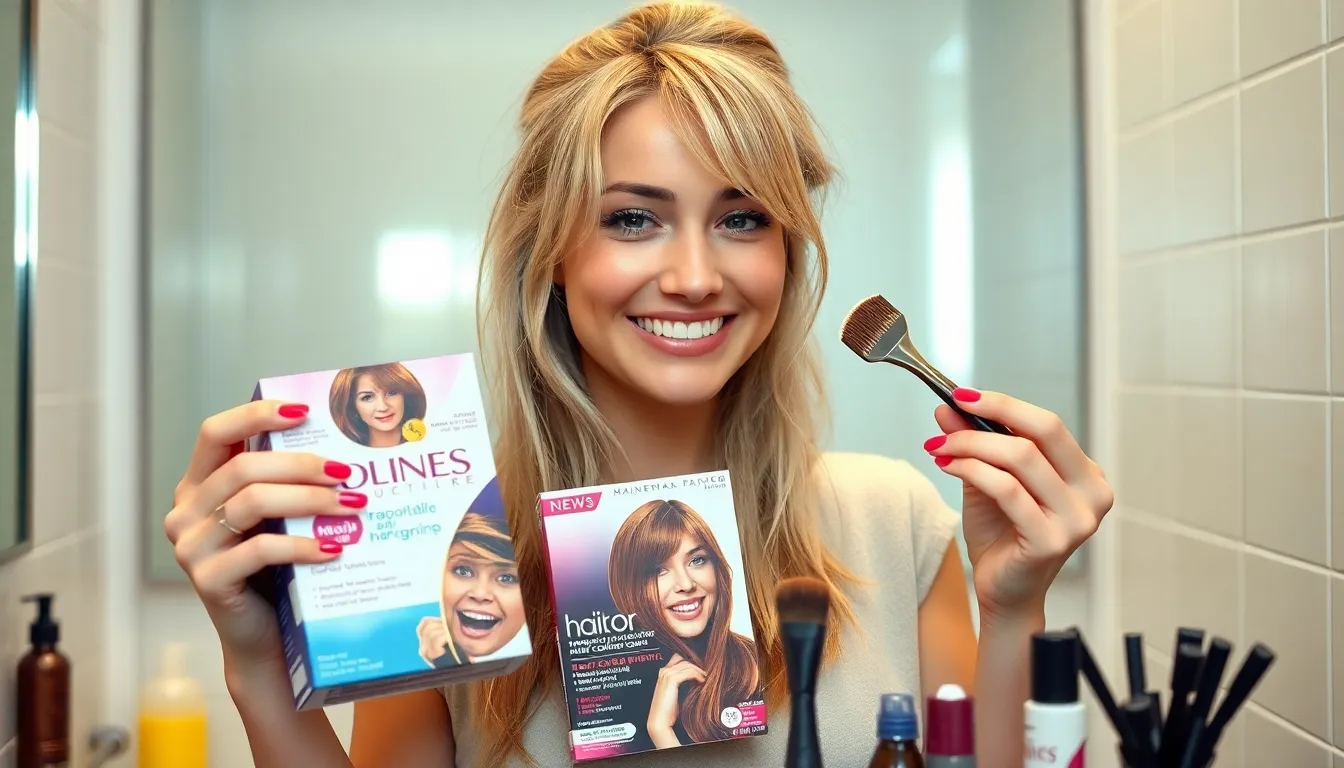
Transforming your hair to achieve that perfect dirty blonde shade requires careful consideration of whether to tackle the process yourself or entrust it to a professional colorist. We’ll explore both options to help you make the best decision for your hair goals and budget.
DIY Dirty Blonde Hair Coloring Methods
Box dye kits offer the most accessible entry point for dirty blonde transformation, with brands like L’Oreal, Clairol, and Garnier providing affordable options ranging from $8 to $15. These kits typically include bleaching powder, developer, toner, and conditioning treatments designed to achieve multi-dimensional results in one session.
Highlighting caps and foils allow you to create strategic placement of blonde tones throughout your hair, mimicking the natural variation found in professional dirty blonde looks. We recommend using a tail comb to select small sections every quarter inch, focusing on face-framing pieces and crown area for maximum impact.
Temporary options like color depositing shampoos, hair chalks, and wash-out sprays provide risk-free ways to test dirty blonde shades before committing to permanent color. Brands such as Overtone and Keracolor offer weekly conditioning treatments that gradually build up blonde tones over 3-4 applications.
Root touch-up products help maintain your dirty blonde between full coloring sessions, with powders, sprays, and stick applicators offering quick coverage for regrowth. These typically last 1-2 washes and cost between $6-12 per product.
Bleaching techniques for darker starting colors require multiple sessions spaced 2-3 weeks apart to safely lift hair to the necessary lightness level. We suggest using 20-volume developer for gradual lifting and always performing strand tests 48 hours before full application.
Benefits of Professional Dirty Blonde Hair Treatment
Custom color formulation ensures your dirty blonde perfectly complements your skin tone, with colorists mixing multiple shades to create personalized results. Professional salons typically use 3-5 different tones in a single dirty blonde service, compared to the single shade found in most at-home kits.
Advanced techniques like balayage, foiling, and color melting create seamless transitions between light and dark sections that are nearly impossible to achieve at home. These methods require specialized training and can take 3-4 hours to complete properly.
Hair health protection becomes paramount when professional colorists assess your hair’s condition before processing, using bond-building treatments and lower-volume developers to minimize damage. Salons typically include deep conditioning treatments valued at $25-40 as part of comprehensive coloring services.
Long-lasting results from professional treatments typically maintain their vibrancy for 12-16 weeks, compared to 6-8 weeks for most DIY methods. This extended longevity often makes professional services more cost-effective even though higher upfront investment of $150-400.
Corrective expertise proves invaluable when things go wrong, as professional colorists can fix uneven tones, brassiness, or over-processing that commonly occur with home coloring attempts. Color correction services, while expensive at $200-500, often cost less than the cumulative damage from multiple failed DIY attempts.
Guaranteed satisfaction comes with most salon services, offering peace of mind through consultations, patch tests, and follow-up appointments to ensure your dirty blonde meets expectations. Many salons provide complimentary toning sessions within two weeks of initial service to perfect the final result.
Essential Hair Care Tips for Maintaining Dirty Blonde Hair
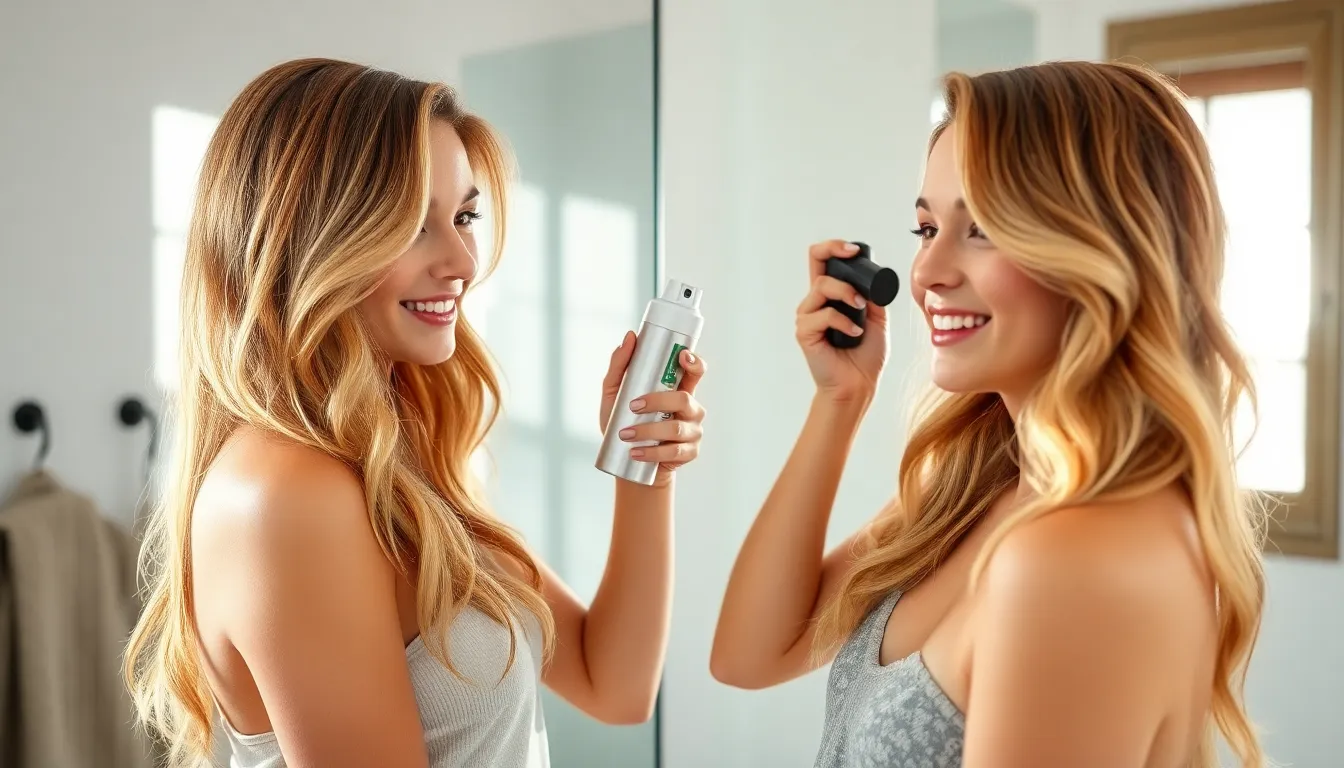
Maintaining dirty blonde hair requires exact care strategies to preserve its multidimensional color and prevent unwanted fading. We’ll share professional techniques that keep your blonde looking vibrant and healthy between salon visits.
Protecting Your Dirty Blonde Hair from Damage
Heat protection shields your dirty blonde color from fading and prevents breakage when styling. Apply a thermal protectant spray before using blow dryers, curling irons, or flat irons to maintain temperature below 300°F for optimal color retention.
UV defense products create a barrier against sun exposure that causes dirty blonde tones to turn brassy or fade unevenly. Use leave-in treatments with SPF 15 or higher during outdoor activities, especially during summer months when UV rays are strongest.
Chemical processing limits help preserve your dirty blonde integrity by spacing treatments at least 8 weeks apart. Avoid overlapping color applications on previously treated hair to prevent over-processing that leads to breakage and dullness.
Swimming pool preparation involves saturating hair with clean water and applying a protective oil before entering chlorinated pools. Rinse immediately after swimming and use a clarifying treatment to remove chlorine buildup that can turn dirty blonde hair green.
Gentle brushing techniques prevent mechanical damage by using wide-tooth combs on wet hair and natural bristle brushes on dry hair. Start detangling from the ends and work upward to minimize breakage and preserve your color-treated strands.
Best Shampoos and Conditioners for Dirty Blonde Hair
Purple shampoos neutralize unwanted yellow tones in dirty blonde hair by depositing violet pigments that counteract brassiness. Use these toning shampoos 1-2 times per week, leaving them on for 3-5 minutes before rinsing thoroughly.
Sulfate-free formulas preserve dirty blonde color by avoiding harsh detergents that strip natural oils and fade highlights prematurely. Look for shampoos containing gentle cleansers like cocamidopropyl betaine or decyl glucoside for effective yet mild cleansing.
Color-safe conditioners contain ingredients like keratin and argan oil that seal the hair cuticle and lock in dirty blonde pigments. Apply conditioner from mid-length to ends, avoiding the scalp area to prevent buildup and maintain volume.
Hydrating systems specifically designed for blonde hair help maintain moisture balance in chemically processed strands. Choose matched shampoo and conditioner sets that work synergistically to enhance your dirty blonde’s natural shine and softness.
Professional-grade products offer concentrated formulations with higher quality ingredients than drugstore alternatives. Invest in salon brands like Olaplex, Redken, or Schwarzkopf that provide superior color protection and hair health benefits.
Weekly Deep Conditioning Treatments
Protein treatments restore strength to dirty blonde hair damaged by chemical processing and environmental stressors. Apply protein masks once weekly for 10-15 minutes to rebuild hair structure and improve elasticity without weighing down fine textures.
Moisture masks replenish hydration in dry, color-treated dirty blonde hair using ingredients like shea butter and hyaluronic acid. Leave deep conditioning treatments on for 20-30 minutes under a shower cap for maximum penetration and effectiveness.
DIY coconut oil treatments provide intensive nourishment by warming 2-3 tablespoons of virgin coconut oil and applying from mid-length to ends. Wrap hair in a towel and leave for 30-60 minutes before shampooing twice to remove all residue.
Overnight treatments offer maximum repair time using leave-in masks designed for extended wear on severely damaged dirty blonde hair. Apply these intensive treatments to damp hair before bed and rinse out in the morning for dramatically improved texture.
Alternating treatment schedules prevent over-conditioning by rotating between protein and moisture treatments based on your hair’s exact needs. Assess your dirty blonde’s condition weekly to determine whether it requires strength building or hydration replenishment.
Styling Ideas That Complement Dirty Blonde Hair
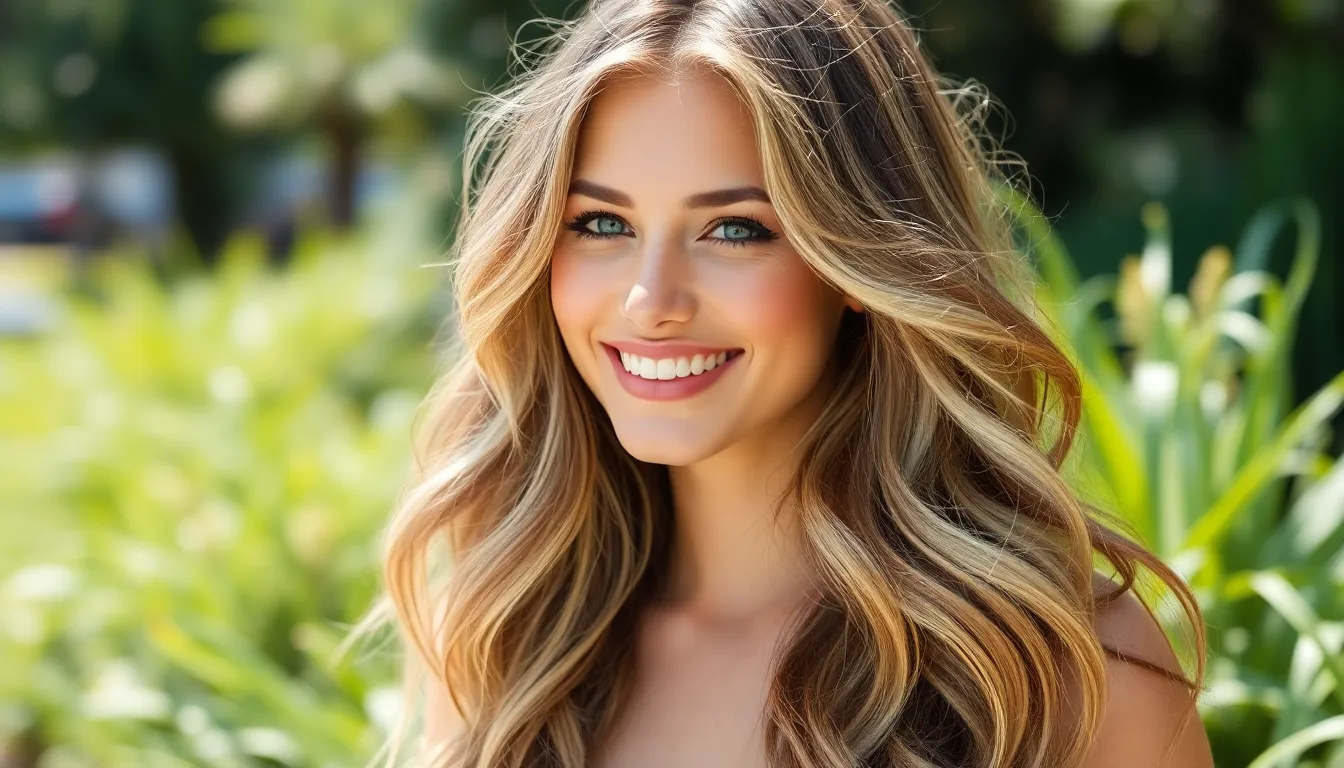
We’ll explore versatile styling techniques that showcase your dirty blonde’s natural dimension and movement. These approaches enhance the multitonal qualities that make this color so captivating.
Beachy Waves and Textured Looks
Sea salt sprays create effortless texture that amplifies dirty blonde’s natural variation between light and dark tones. Apply the product to damp hair and scrunch sections while air drying for maximum volume and movement.
Loose curls using a 1.5 inch barrel enhance the golden highlights while allowing ashy undertones to peek through the waves. Curl sections away from your face and gently finger through the curls once they cool completely.
Braided overnight waves offer a heat free method that creates beautiful texture without damage. Divide slightly damp hair into 4-6 loose braids before bed and unravel them in the morning for natural looking waves.
Texturizing paste applied to dry hair defines individual strands and creates separation that showcases dirty blonde’s multidimensional qualities. Focus on mid lengths and ends while avoiding the roots to prevent weighing down your style.
Sleek and Straight Styling Options
Flat iron styling at 300-350°F creates smooth results that highlight dirty blonde’s sophisticated color blend without causing excessive heat damage. Use ceramic or titanium plates for even heat distribution across all hair sections.
Smoothing serums applied before blow drying eliminate frizz while maintaining your dirty blonde’s natural shine and color depth. Choose lightweight formulas that won’t create buildup or dull your highlights over time.
Glass hair techniques using paddle brushes during blow drying create mirror like smoothness that reflects dirty blonde’s varied tones beautifully. Pull sections taut while directing airflow down the hair shaft for maximum sleekness.
Hair oils like argan or jojoba add glossy finish to straight styles while nourishing your colored hair. Apply sparingly to mid lengths and ends to avoid creating greasy roots or weighing down fine hair textures.
Braided Styles That Highlight Dirty Blonde Tones
Dutch braids showcase color variation by creating raised sections that catch light differently throughout the braid pattern. The technique allows both golden highlights and ashy undertones to display prominently in alternating sections.
Fishtail braids create intricate patterns that weave dirty blonde’s multiple tones together for stunning visual interest. Pull apart sections gently after securing to create fuller texture that emphasizes your color’s complexity.
Crown braids frame the face beautifully while allowing loose hair to cascade down and show off dirty blonde’s natural movement. This style works particularly well for highlighting the face framing pieces that often contain the brightest blonde tones.
Side swept French braids create asymmetrical interest that draws attention to dirty blonde’s dimensional qualities. Start the braid behind one ear and incorporate hair as you work across to create beautiful color flow throughout the style.
Waterfall braids allow sections to fall freely through the braid pattern, creating a cascading effect that showcases dirty blonde’s varied tones at different lengths. This romantic style highlights both the structured braid and flowing hair sections equally.
Common Mistakes to Avoid When Going Dirty Blonde

Achieving the perfect dirty blonde shade requires careful planning and proper execution to avoid costly color mishaps. We’ve identified the most frequent errors that can turn your dream hair transformation into a styling nightmare.
Over-Processing Your Hair
Bleaching too aggressively is the most damaging mistake we see when clients attempt dirty blonde transformations. Your hair can only handle so much chemical processing in a single session, and pushing beyond its limits results in breakage, dryness, and an uneven color base.
Skipping strand tests leads to unpredictable results and potential hair damage. We always recommend testing a small hidden section first to gauge how your hair responds to the lightening process and determine the appropriate processing time.
Attempting dramatic color changes in one appointment often backfires spectacularly. If you’re starting with dark brown or black hair, achieving dirty blonde typically requires 2-3 sessions spaced 4-6 weeks apart to maintain hair integrity.
Using box dyes with high developer volumes can cause severe chemical burns and uneven lifting. Most at-home kits contain 40-volume developer, which is often too harsh for achieving the subtle gradations needed for authentic dirty blonde results.
Choosing the Wrong Undertones
Ignoring your natural undertones creates an unflattering color mismatch that looks artificial and washes out your complexion. Cool undertoned skin requires ashy dirty blonde shades, while warm undertones need golden or caramel variations.
Following celebrity inspiration blindly without considering your unique features often results in disappointment. Blake Lively’s golden dirty blonde might look stunning on her, but it could clash completely with your pink undertones.
Mixing warm and cool tones incorrectly creates muddy, gray looking hair that lacks the dimensional beauty of proper dirty blonde. We recommend sticking within the same tonal family and letting a professional balance the subtle contrasts.
Overlooking your eye color when selecting dirty blonde shades can diminish your natural features. Blue eyes typically shine with cooler ashy tones, while brown eyes are enhanced by warmer golden highlights.
Neglecting Regular Maintenance
Skipping toning appointments allows brassiness to take over your carefully crafted color within 3-4 weeks. Regular toning sessions every 6-8 weeks keep your dirty blonde looking fresh and intentional rather than grown out and neglected.
Using harsh shampoos daily strips the delicate color molecules and causes rapid fading. We suggest washing dirty blonde hair only 2-3 times per week with sulfate free products specifically formulated for color treated hair.
Avoiding deep conditioning treatments leaves your lightened hair vulnerable to environmental damage and breakage. Weekly protein and moisture masks are essential for maintaining the health and vibrancy of your dirty blonde investment.
Ignoring root touch ups for more than 12 weeks creates an obvious demarcation line that looks unprofessional. While dirty blonde is low maintenance, completely neglecting your roots defeats the purpose of this sophisticated color choice.
Celebrity Inspiration: Famous Dirty Blonde Hair Icons
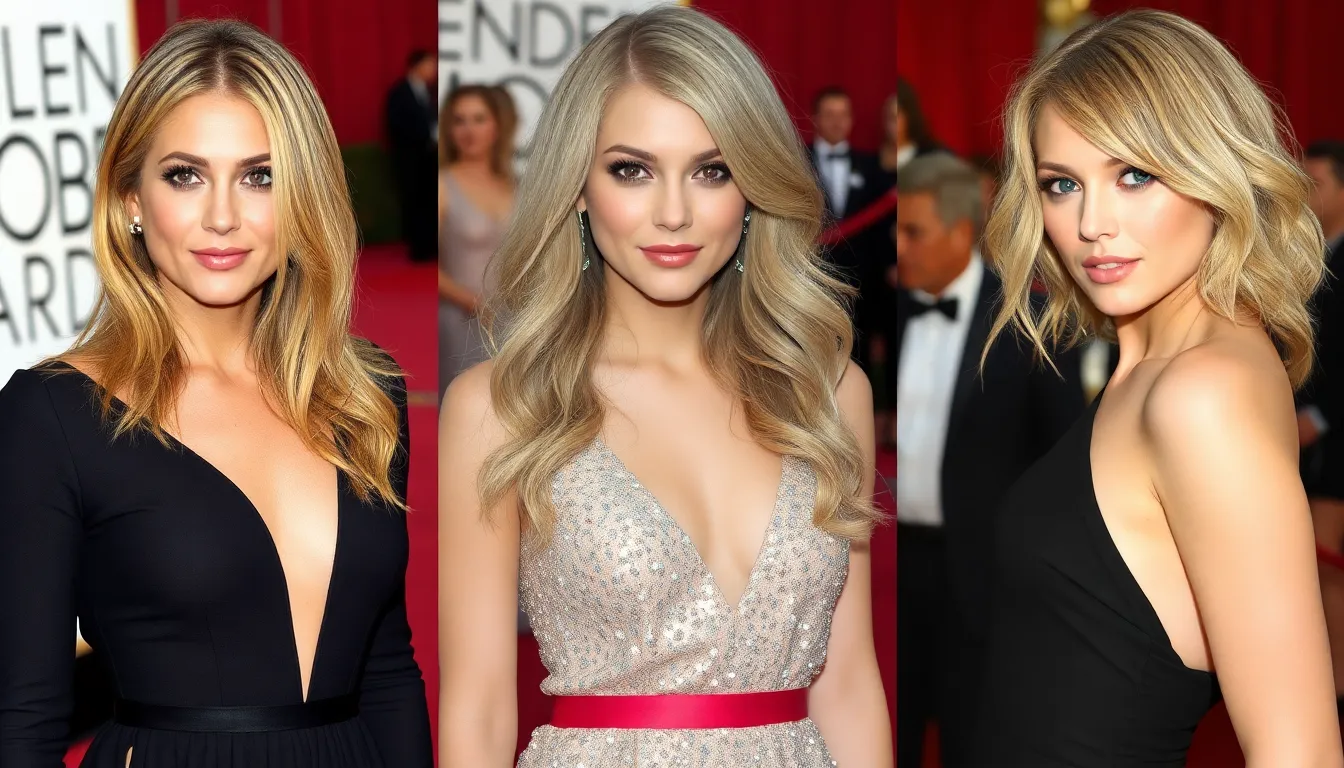
Looking at red carpet events and social media feeds, we can see that dirty blonde hair has become the signature shade for many A-list celebrities. These stars prove that this versatile color works across different face shapes, skin tones, and personal styles.
Classic Hollywood Dirty Blonde Looks
Jennifer Aniston remains the ultimate dirty blonde icon, having perfected her signature sun-kissed shade during her Friends era and maintaining variations of it for over two decades. Her colorist masterfully blends honey blonde highlights with medium brown lowlights, creating that effortless California girl aesthetic that’s inspired millions of salon requests.
Blake Lively showcases the glamorous side of dirty blonde with her voluminous waves that feature golden highlights interwoven with darker blonde tones. We love how her color appears lighter at the ends and gradually deepens toward the roots, mimicking natural sun lightening patterns that make the shade look completely authentic.
Sarah Jessica Parker demonstrated dirty blonde’s versatility throughout Sex and the City with her textured, lived-in color that featured warm caramel undertones mixed with cooler ash highlights. Her approach proved that dirty blonde works beautifully with natural texture and doesn’t require perfect styling to look polished.
Sienna Miller brought a bohemian edge to dirty blonde hair with her tousled, undone styling that highlighted the color’s natural movement and dimension. She often paired darker roots with lighter mid-lengths and ends, showing how this shade grows out gracefully without looking unkempt.
Modern Celebrity Dirty Blonde Transformations
Margot Robbie frequently switches between platinum blonde and dirty blonde, proving how this shade serves as the perfect transitional color when growing out lighter tones. Her colorist uses ash undertones to prevent brassiness while maintaining enough warmth to complement her fair complexion.
Hailey Bieber has made dirty blonde her signature with a modern twist, incorporating subtle face-framing highlights that brighten her features while keeping the overall tone sophisticated and wearable. We notice how she maintains cooler undertones that photograph beautifully under different lighting conditions.
Taylor Swift surprised fans with her dirty blonde transformation, moving away from her signature golden blonde to embrace a more muted, multidimensional approach. Her version features deeper roots that blend seamlessly into lighter ends, creating natural-looking dimension that works with both straight and curly styling.
Kaia Gerber represents the younger generation’s take on dirty blonde, opting for a more subtle approach with barely-there highlights that enhance her natural brown base. She proves that dirty blonde doesn’t have to be dramatically light to be impactful, showing how gentle color placement can create beautiful depth.
Rosie Huntington-Whiteley consistently rocks a sophisticated dirty blonde that balances warm honey tones with cooler ash highlights, creating a color that looks expensive and effortlessly chic. Her approach demonstrates how proper toning can prevent any unwanted brassy notes while maintaining the shade’s signature warmth.
Cost Breakdown: What to Expect When Getting Dirty Blonde Hair
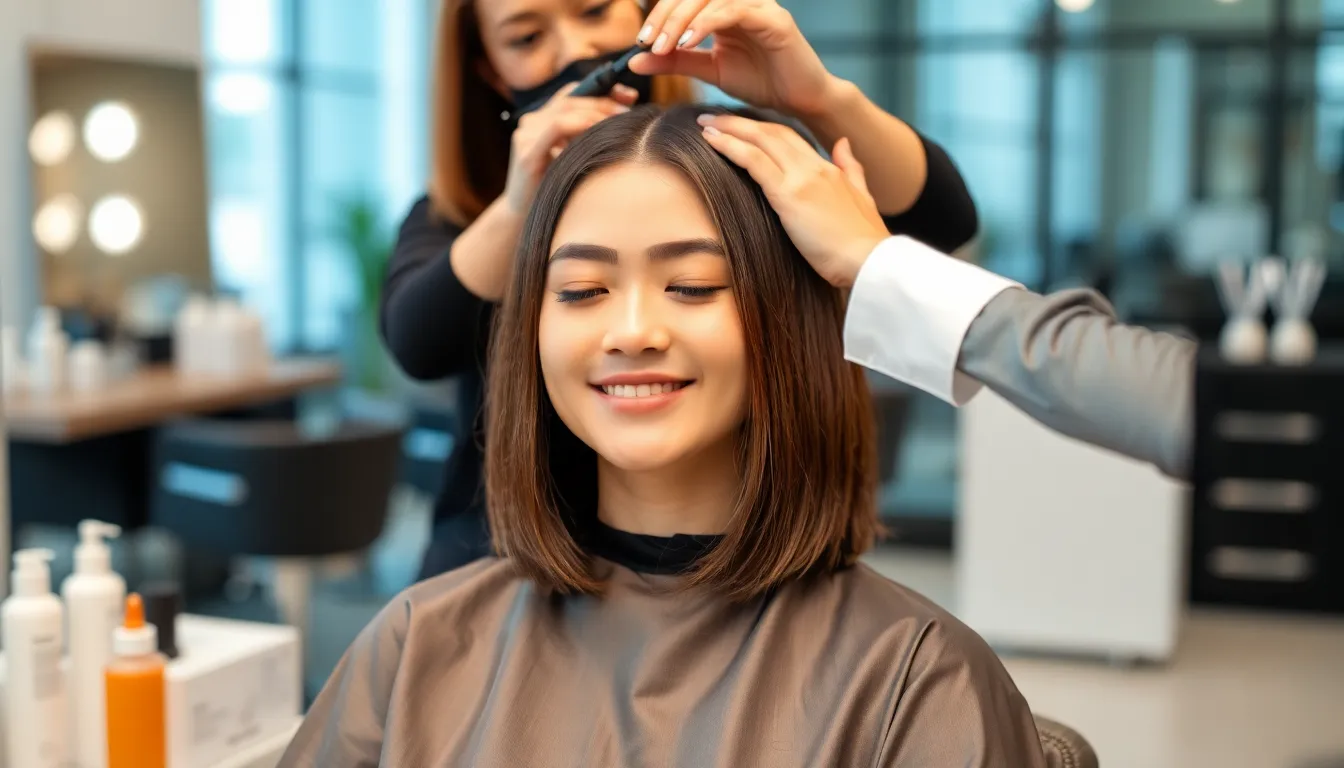
Initial Salon Color Service
Professional colorists typically charge between $150 to $400 for achieving dirty blonde hair from your natural base color. Several factors influence this wide pricing range including your starting hair color, desired shade intensity, and salon location. Urban salons generally command higher prices while suburban locations offer more budget-friendly options.
Pricing Factors That Affect Your Investment:
| Service Component | Price Range | Duration |
|---|---|---|
| Initial consultation | $25-$50 | 15-30 minutes |
| Color application | $120-$300 | 2-4 hours |
| Toning service | $30-$80 | 30-45 minutes |
| Styling and blowout | $40-$75 | 45-60 minutes |
Touch-Up Appointments and Maintenance
Root touch-ups for dirty blonde hair typically cost $75 to $150 every 8-12 weeks depending on your hair growth rate and desired maintenance level. These appointments require less time and product than your initial transformation. Toning sessions range from $45 to $85 and help maintain your shade’s perfect balance.
Regular glossing treatments add shine and depth for $60 to $120 every 6-8 weeks. These services extend your color’s vibrancy while protecting against environmental damage.
DIY Cost Alternatives
Box dye kits designed for dirty blonde shades cost between $8 to $25 at most drugstores and beauty supply stores. Home highlighting kits with caps or foils range from $15 to $35 per application. Temporary color sprays and mousses offer the most affordable option at $6 to $18 per product.
Semi-permanent options like color depositing shampoos cost $12 to $28 and gradually build your desired shade over multiple uses. These products work best for subtle changes or maintenance between salon visits.
Product Investment for Home Care
Quality shampoo and conditioner systems specifically formulated for blonde hair typically cost $25 to $60 per set. Purple shampoos essential for preventing brassiness range from $12 to $35 per bottle. Deep conditioning masks designed for color-treated hair cost $15 to $45 and should be used weekly.
Heat protectant sprays and UV defense products add another $18 to $40 to your routine but significantly extend your color’s longevity. Leave-in treatments for blonde hair maintenance range from $20 to $55 per product.
Long-Term Investment Considerations
Annual maintenance for professionally achieved dirty blonde hair averages $600 to $1,200 including regular touch-ups, toning, and occasional deep treatments. This investment provides consistent results and healthy hair condition. DIY maintenance reduces costs to approximately $150 to $400 per year but requires more time and carries higher risk of color mishaps.
Professional correction services for DIY mistakes typically cost $200 to $500 depending on the damage severity. Insurance through regular salon visits often proves more economical than attempting major repairs later.
Transitioning from Other Hair Colors to Dirty Blonde
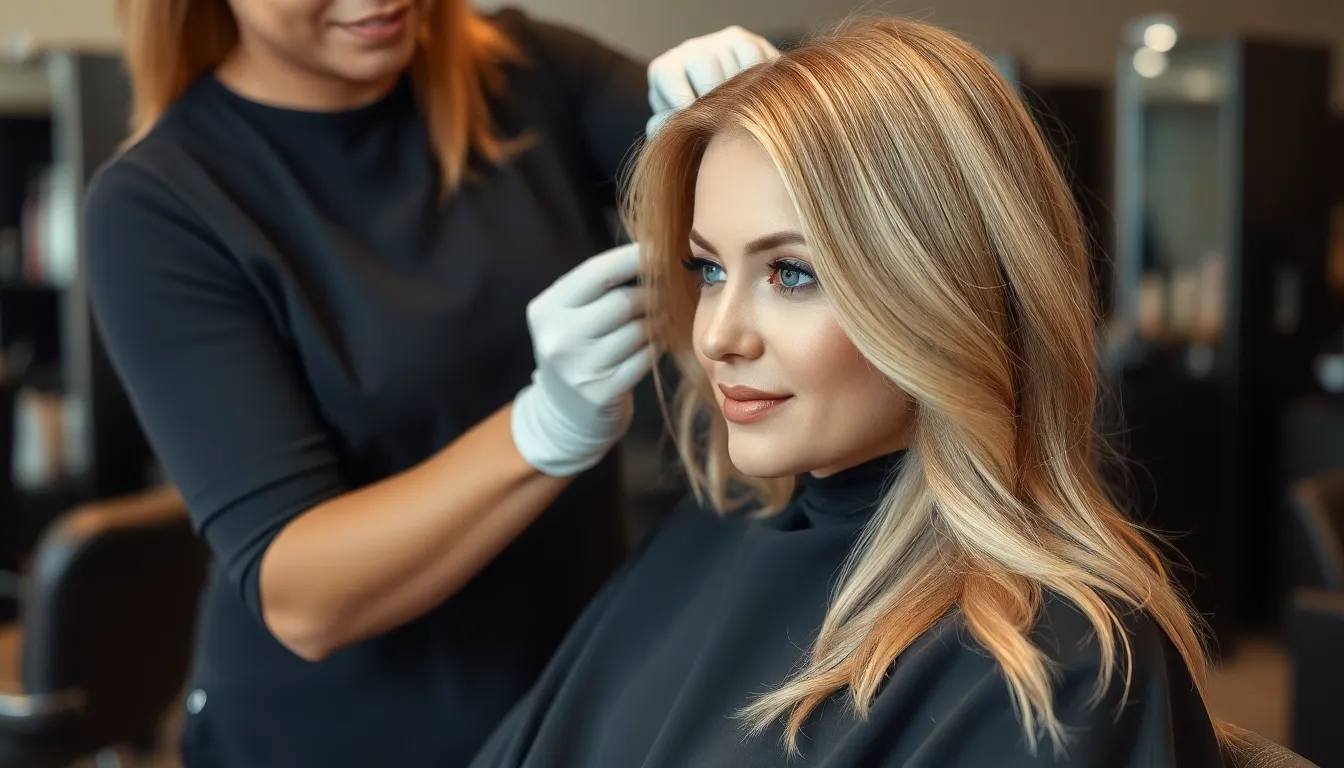
Achieving dirty blonde from your current hair color requires different approaches and considerations depending on your starting point. We’ll walk you through the exact processes for transitioning from both dark and light hair colors to help you achieve your desired dirty blonde shade safely.
From Dark Hair to Dirty Blonde
Lightening dark hair to dirty blonde requires a gradual multi-step process to prevent severe damage and achieve even color distribution. We recommend starting with a consultation to assess your hair’s condition and determine the best approach for your exact shade of brown or black hair.
Professional colorists typically use a bleaching process followed by toning to reach the desired dirty blonde level. Dark brown hair usually requires 2-3 lightening sessions spaced 2-3 weeks apart, while black hair may need 3-4 sessions to safely reach the appropriate base level for dirty blonde tones.
Pre-lightening treatments help protect your hair during the transition process. We suggest using protein treatments 1-2 weeks before your first appointment and deep conditioning masks between sessions to maintain hair health and elasticity.
Expect the process to take 6-12 weeks depending on your starting color and hair’s response to lightening. Rushing this timeline often results in breakage, uneven color, or brassy tones that require costly correction.
Maintenance becomes crucial after achieving dirty blonde from dark hair since your natural regrowth will create a stark contrast. We recommend scheduling touch-ups every 6-8 weeks to blend new growth and maintain the seamless dirty blonde appearance.
From Light Blonde to Dirty Blonde
Adding depth to light blonde hair creates the perfect foundation for dirty blonde without extensive lightening processes. We find this transition much gentler on your hair since it involves adding darker tones rather than removing existing color.
Lowlights become the primary technique for transforming platinum or light blonde into dirty blonde. Your colorist will strategically place darker shades like light brown, caramel, or ash tones throughout your hair to create the multidimensional dirty blonde effect.
Single-process toning can achieve subtle dirty blonde results on lighter hair. We recommend using demi-permanent colors that deposit ash or neutral tones to counteract any brassiness while adding the desired depth.
The transition typically takes 1-2 appointments since you’re working with already lightened hair. Most clients achieve their desired dirty blonde shade in a single session, with possible fine-tuning during a follow-up appointment 4-6 weeks later.
Maintaining dirty blonde from light hair focuses on preventing fading rather than managing regrowth contrast. We suggest using purple shampoo weekly and scheduling glossing treatments every 8-10 weeks to keep your dirty blonde tones fresh and vibrant.
Conclusion
Dirty blonde hair remains one of the most sought-after color choices for good reason. We’ve explored how this versatile shade offers the perfect balance of sophistication and effortless beauty while requiring minimal upkeep compared to traditional blonde hues.
Whether you’re considering your first color transformation or looking to refresh your current look we believe dirty blonde delivers exceptional results across all skin tones and personal styles. The investment in professional services typically pays off through longer-lasting color and healthier hair.
Remember that achieving your ideal dirty blonde shade takes patience and proper care. We encourage you to work with experienced colorists who understand your hair’s unique needs and can create a customized approach that enhances your natural beauty while maintaining optimal hair health.
Frequently Asked Questions
What is dirty blonde hair color?
Dirty blonde is a versatile hair shade that combines warm golden highlights with cooler ashy undertones. It features a medium to light brown base with strategically placed blonde highlights, creating a natural sun-kissed effect. This multidimensional color mimics the appearance of blonde hair that has developed darker roots and subtle lowlights over time, offering depth and sophistication.
How often does dirty blonde hair need touch-ups?
Dirty blonde hair requires touch-ups every 8-12 weeks, making it more low-maintenance than traditional blonde colors that need refreshing every 4-6 weeks. The color grows out gracefully due to its natural-looking blend of tones, allowing for longer periods between salon visits while maintaining an attractive appearance.
What skin tones work best with dirty blonde hair?
Dirty blonde works well with fair to medium skin tones. Cool-toned variations like ash dirty blonde suit those with pink or blue undertones, while warm-toned options like golden dirty blonde enhance yellow or peach undertones. Neutral-toned dirty blonde provides a balanced option for those with neutral undertones.
Should I go to a salon or try DIY for dirty blonde hair?
Professional salon treatments are recommended for achieving dirty blonde hair. While DIY options like box dyes exist and cost less upfront, professional colorists provide custom formulations, advanced techniques, and better hair health protection. This results in longer-lasting, more vibrant color and reduces the risk of damage or uneven results.
How do I maintain dirty blonde hair color?
Maintain dirty blonde hair by using purple shampoo to neutralize brassiness, sulfate-free products to preserve color, and heat protection before styling. Apply UV defense treatments, space chemical processes, and use weekly deep conditioning masks. Gentle brushing and regular toning appointments every 6-8 weeks help maintain vibrancy and prevent fading.
How much does dirty blonde hair cost?
Initial salon services for dirty blonde hair range from $150 to $400, depending on starting hair color and salon location. Touch-up appointments cost $75 to $150 every 8-12 weeks, with glossing treatments adding $60 to $120 every 6-8 weeks. DIY options are more budget-friendly but may require more frequent corrections.
Can I achieve dirty blonde from dark hair?
Yes, but transitioning from dark hair to dirty blonde requires a gradual multi-step lightening process. This typically involves multiple salon sessions to avoid damage, with pre-lightening treatments and careful maintenance. The process takes longer and costs more than transitioning from lighter starting colors, but professional guidance ensures optimal results.
What styling techniques work best for dirty blonde hair?
Dirty blonde hair looks great with beachy waves using sea salt sprays, loose curls with a 1.5-inch barrel, or sleek styles using flat irons at controlled temperatures. Braided styles like Dutch and fishtail braids highlight color variation, while heat-free overnight braiding creates natural-looking waves that enhance the color’s dimension.


